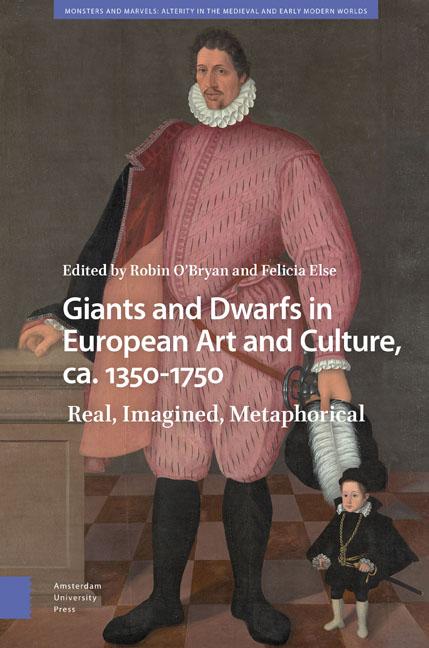3 - Giants as Primordial Ancestors in Sixteenth-Century Art and Poetry
Published online by Cambridge University Press: 13 April 2024
Summary
Abstract
Envisioned as primordial ancestors in art, and at the heart of origin stories in epic poetry, giants were ubiquitous in sixteenth-century Europe. Establishing ancestry with giants was pervasive in the German tradition via the epic Nibelungenlied and the archaeology of Maximilian I. Later, the printmaker Hendrik Goltzius would interpret the colossal figure of Hercules not only in terms of Dutch nationalism, but also of ancestral significance. In England, within the cultural archaeology of Edmund Spenser's epic poem The Faerie Queene several giants are invoked in order to imagine past ancestry, as much as future hopes of imperialism. This paper takes a comparative approach and analyzes how giants figure prominently in German, English, and Dutch art and epic poetry.
Keywords: Nibelungenlied, Maximilian I, Faerie Queene, Edmund Spenser, Hendrik Goltzius, Hercules
Early modern art and poetry attest to a widespread and pervasive belief in the existence of giants, not simply as vanquished foes or the villains of myths and fairy tales, but as primordial ancestors. In Northern Europe an imperative to discover origins included the revival and creation of epic poems that featured giants in pivotal roles. Ancestral giants were also visualized in woodcuts and engravings, their physical remains sought and coveted, all toward consolidating “evidence” of their existence. While it may seem odd to locate giants at the heart of nascent national identities, this is precisely what multiple early modern artists and poets sought to do, often with the support of their patrons. These stories of giants were not necessarily obscure or fantastic, or seen in terms of the Other, but in some crucial instances were central to monarchies, their courts, and the politics of place. A cultural history of giants must consider the role of art and poetry in supporting such beliefs and also take discovery accounts of gigantic bones and relics seriously.
This chapter will discuss giants who figure in German, English, and Dutch art and epic poetry as a way of accounting for origins. Contra other traditions where the giant is a malevolent force, it examines how giants were interpreted as vital to blood lines and even wielded as a means to assert the right to rule. In these northern geographical realms, all at a physical remove from Greek and Roman antiquity, imaginings for the distant past were especially important.
- Type
- Chapter
- Information
- Giants and Dwarfs in European Art and Culture, c. 1350-1750Real, Imagined, Metaphorical, pp. 125 - 154Publisher: Amsterdam University PressPrint publication year: 2024



